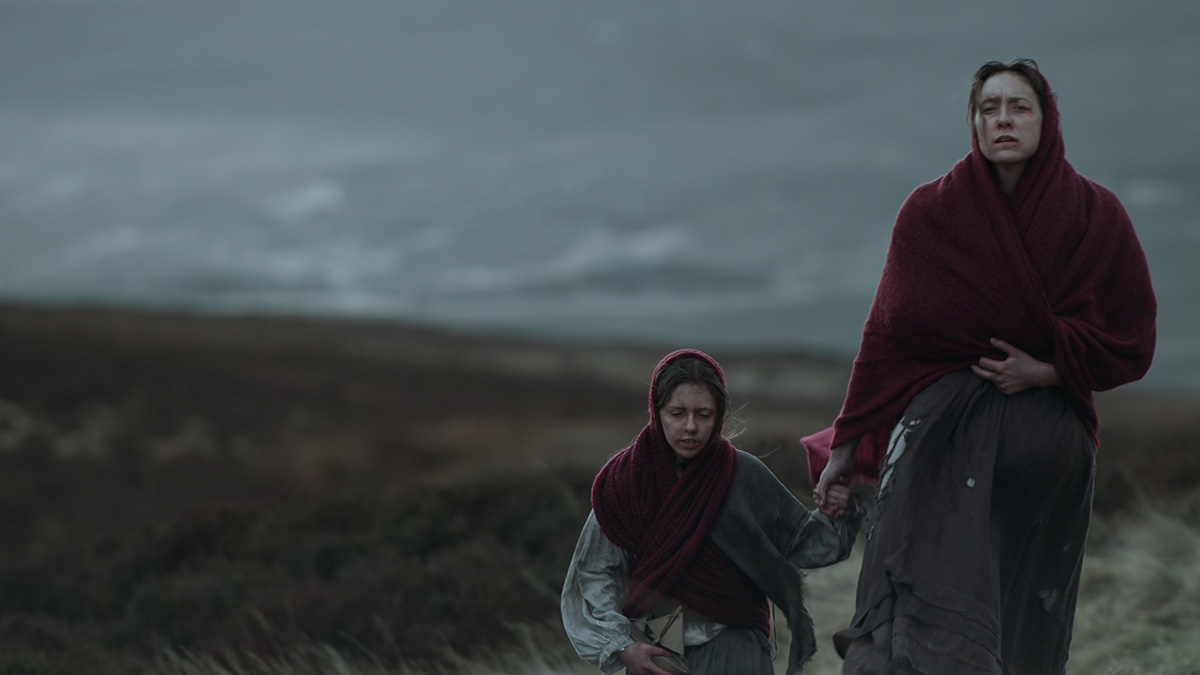MyCelium from writer director Elena Doyle is one of the short film highlights from this year’s Galway Film Fleadh. Elena is an award winning director and writer, recognized for her award-winning achievements. She won the AFTA AWARD (Australia / NZ Film & TV awards, equivalent to IFTA) in 2011 for her short film “Meniscus” and received the IADT Writers Guild Ireland Award in 2019.
She is passionate about the natural environment and often explores themes of human nature, our connection with nature, and the cycle of death and rebirth in her work. She began her career as a motion graphics artist for Irish television after graduating from the National College of Art and Design in Dublin. In 2004, she made a significant move to New Zealand, where she directed a series of remarkable short films, such as “Rain,” “Meniscus,” and “Inorganic.” These captivating works drew inspiration from the rich tapestry of indigenous culture, the breath taking New Zealand landscape, and the profound verses of Maori poet Hone Tu Whare. As a testament to their artistic merit, Elena’s films received widespread acclaim, garnering prestigious awards and earning coveted screenings at renowned international film festivals.
Elena has also worked as a director for prominent production companies and shadow director on television series. She completed an MA in screenwriting, winning awards for her work, and is currently developing a TV series and pilot, ‘Parousia,’ an ecological thriller.
Was it important that the movie was in Irish?
It made sense for the lead character to speak in Irish, as the film is set in 1847 in rural Ireland, it felt more authentic to have the mothers voice speak the native language of our Country.
Can you tell us a little about the background of this project, how it went from an idea to the beautiful short film.
My previous films Rain and Meniscus -made while I was living in NZ- were inspired by the landscape and the Maori personification of nature expressed in the poetry of Hone Tu Whare. In these film I explore themes of human nature connection with nature and the natural cycle of death and rebirth. After a decade living in Auckland Nz – I felt the draw back to Ireland to tell the stories from where I was born. While living in NZ I was very moved by the stories I read about the Famine in way I never felt when I lived in Ireland. So with Mycelium I continue to explore these themes started in my two previous films but in the context of our history and our pre-christian connection to the land, nature and ancient traditions. The idea for the film came from an account I heard of a baby being born on a coffin ship who went on to thrive in América -i was stuck by this feeling of out of darkness there is New life , new beginnings and hope.
How does it feel to have your film premiere at the prestigious Galway Film Fleadh? It is always an honour to have a film screen at the fleadh this will be the third time I have a film at the at the Fleadh. Both Good Bye Darling and Inorganic have screened at the Fleadh 2016 and 2014
Will the film go on to play at other film festivals?
The film will screen at the Female Eye Film Festival Toronto- it has only just started it’s festival run so I will hear back about festivals submissions towards the end of August onwards
Has it been seen by Irish American audiences yet?
The film hasn’t screened in the US yet but hopefully it will very soon.
<
You have a background as a motion graphics artist, did that help creating these dream like sequences?
Yes, absolutely, I studied digital animation in NZ and worked in VFX in NZ. I did the 2d and 3d animation and compositing on my film Rain, I also did all the compositing on Meniscus. I understand the whole VFX post process but I love shooting in camera effects – I try as much as possible to generate effects incamera as there is an authencity you can feel and I’m not afraid to experiment and try New things – its part of my whole process- I love it and trust it.
Could you tell us about the symbolism of the tree & the pieces of fabric tied to it?
The tree with the rags represents the fairy tree and that pagan tradition when nature was sacred and water was revered, when someone was sick they would take an item of clothing dip it into the holy river/ holy well it usually had a fairytree growing beside it. They would wipe the person with the rag dipped in water and hang it on the tree, when the rag rotted away the illness was believed to leave the body. The ships that crossed the Atlantic to the New world were made of Ancient Oak. In pre-christian Ireland the Oak tree was revered as a sacred tree and it was believed to be a portal to the otherworld.
In Oak forests, Mycelium fungi play an essential role in the ecosystem. They break down dead matter and regenerate the soil for new life. They are the threads that connect and communicate with everything in the unending cycle of life, death and rebirth. Out of darkness comes new life.
You are currently working on a TV series, ‘Parousia’ which is described as an ecological thriller, what can you tell us about that at this early stage?
Parousia is an ecological thriller – it’s a 6 part limited series I am currently working on. I’ve also written a feature screenplay called Ground Beneath Her Feet which is set during Famine


